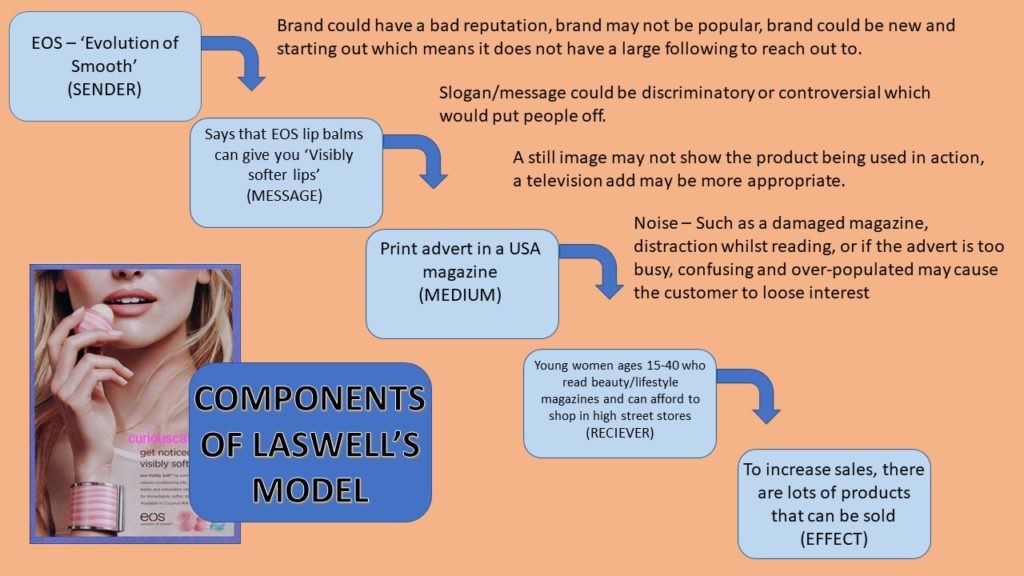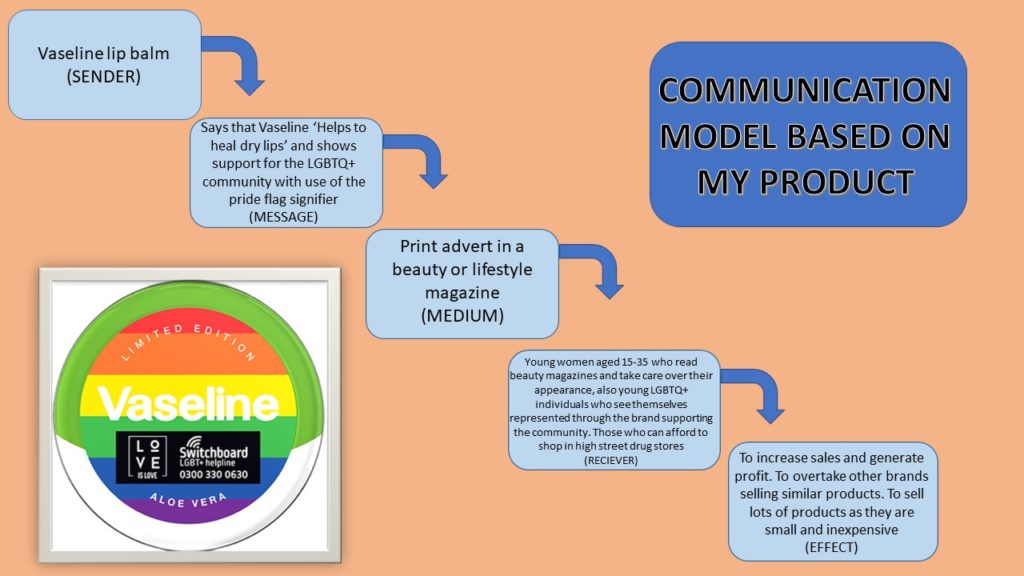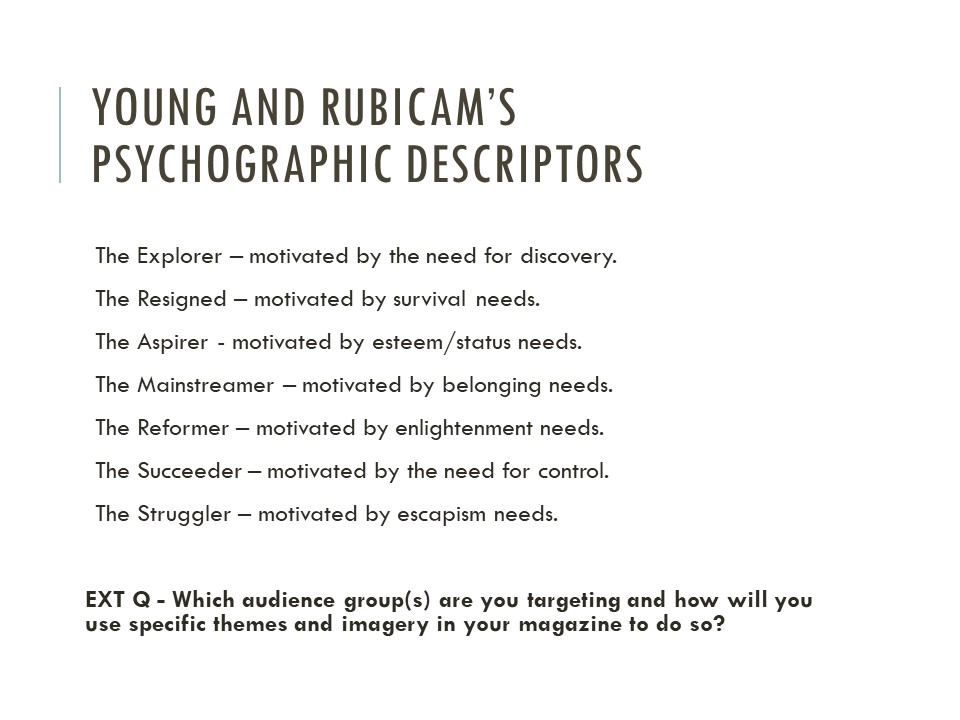NOTES:
– Increase in audience research during WW2, propaganda used through a hypodermic model
– Hypodermic model (passive consumption): done as told through media and adverting… such as propaganda during WW2
– Passive consumption, very significant to advertising – the slow and instilled forced idea and/or belief into someone own theories through various media techniques
– Active consumption: The people engage in the media themselves, consciously, to then buy a product by choice, despite it may being an ill wise decision
– 2 step flow of communication: When the information for the media is the first step, and then the info goes to the main influencers to then be consumed by the masses through the influencers
– Lasswell’s Linear Model of Communication: Who (sender)…. Says What (message)…. Channel (medium)…. To Whom (receiver)…. The Effect (Feedback)
– In 1927 Harold Lasswell wrote Propaganda Technique in the World War which highlighted the brew of ‘subtle poison, which industrious men injected into the veins of a staggering people until the smashing powers . . . knocked them into submission’














